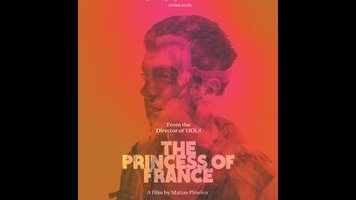Argentina’s Matías Piñeiro makes small ensemble films of careful movements and parts, which, at their best, resemble nothing so much as chamber music for the big screen. Though he shoots in long takes, his personal style doesn’t exactly line up with the conventions of the festival-ready art movie; his camera drifts a lot, panning and tilting through a roundelay of medium compositions and close-ups, and his movies are talky and performance-centric. And though Piñeiro is a young filmmaker who makes movies about young people, there’s no hip attitude in his work; his references are classical, with Shakespeare being a favorite. Coming on the heels of Rosalinda and Viola, The Princess Of France is his third consecutive reinterpretation of the Bard. It begins with an extended dream sequence and ends with a character’s fantasy of how things could have been, and, in between, it moves between relationships and role-playing with an inventive fluidity that is very much Piñeiro’s own.
The Princess Of France’s slippery framework of a plot concerns young stage director Victor (Julian Larquier Tallarini) returning to Buenos Aires after several years away. There, he gathers his actor friends to rehearse and record a radio-play adaptation of Love’s Labour’s Lost, meets up with exes, and cheats on his girlfriend with a pregnant acquaintance (María Villar). The large, mostly female cast consists almost entirely of Piñeiro veterans, some of whom have been working with the writer-director since his black-and-white debut feature, The Stolen Man. Each is given a discrete role, though Piñeiro makes little effort to establish or distinguish identities and circumstances, which creates an air of mystery that some viewers may find obtuse. The movie’s qualities are essentially musical; it’s about interplay and shading. The subject is desire, but rendered in vague terms, so that it seems to flow like a current, from person to person, artwork to artwork. It’s a relationship drama in which the relationships are left intentionally inspecific.
Besides extended passages from Love’s Labour’s Lost, there are bits of Henry V and—in what feels like Piñeiro’s take on the Marvel post-credits stinger—As You Like It, along with countless paperback books, paintings seen on museum walls and on postcards, and the first movement of Robert Schumann’s Spring Symphony, which synchs up with a night soccer game in the opening shot. Sometimes, the intended meaning is unclear. What is clear, both from the way Piñeiro works around these references and from his generous handling of the cast, is his affection for his material, which takes on a charm of its own. In an era in which the big movies are bigger and more expensive than they’ve ever been, few acts of resistance seem more meaningful than making a small, careful, and personal film that still wants nothing more than to invite the viewer into its private world.


 Keep scrolling for more great stories from The A.V. Club.
Keep scrolling for more great stories from The A.V. Club.